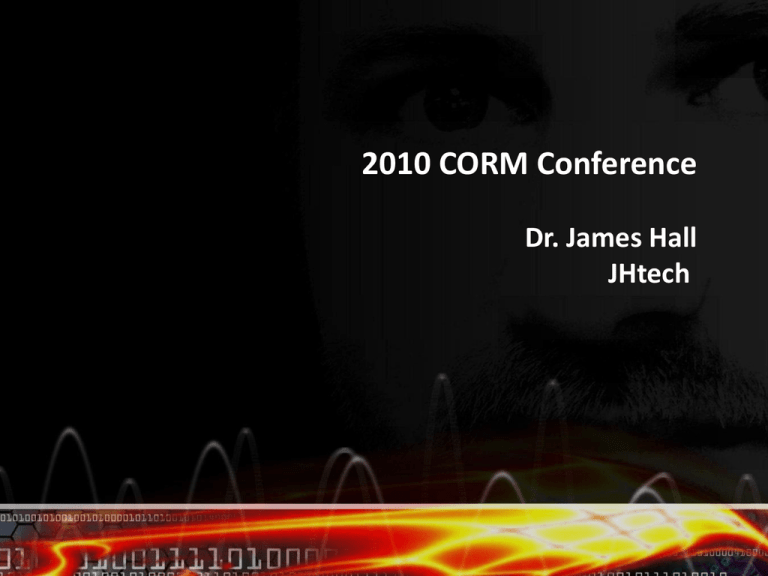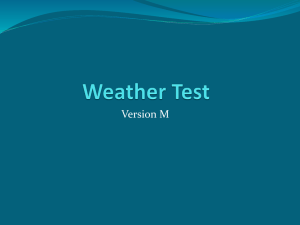CORM 2010 - Solar Data Warehouse
advertisement

2010 CORM Conference Dr. James Hall JHtech Nature’s Solar Power Plants Agriculture Needs Better Solar Data for Modeling Solar Radiation Measurements Satellite-based of solar radiation data: • Near-Real time • Provides Global Coverage However: • Cannot distinguish between clouds and snow cover. • Measurements are less accurate near mountains, oceans or other large bodies of water. • Measurements are made at the top of the atmosphere and require models to estimate the solar radiation at the ground. Solar Radiation Measurements Accuracy of solar radiation data: • Highest quality research sites: 3-6% error • Routine operational ground sites: 6-12% error • Satellite observations: 20% error based on NASA estimates (35 W/m2 RMS) • Satellite observations: 19% error based on third party estimates Ground-based measurements are clearly more accurate than satellite data Satellite Measurements 20 % Error Average Error of Satellite Observations RMS error of 35W/m2 = 0.84 kWh/m2/day Solar Radiation Measurements National Solar Radiation Database: • Measurements from only 40 high-quality stations, remaining 1414 locations were modeled. • Not real-time, latest series is 2003-2005. • Accuracy not published by NREL • Intended to be statistically representative, not historically accurate!* * User Manual for National Solar Radiation Database Solar Data Warehouse Largest agro-climate database: • Hourly & Daily data for last 5-20 years at 3000+ US locations • Soils, Weather, Evapotranspiration, Solar, Soil Temp • Multiple Layers of Quality Control • Near real-time • Lowest error of any national solar radiation source Solar Data Warehouse Hourly & Daily data on temperature, precipitation, humidity, wind speed, solar radiation, evapo-transpiration for 3000 US locations. Soil temperature is also available for many locations. Solar Data Warehouse SDW data shows much greater discrimination of solar variations Solar Data Warehouse Our Data Sources: • Over 30 different networks across the US. • Run by federal agencies, states and universities for their own specific purposes • Many different formats & no bulk access • Medium-quality sensors • Little or no quality control Relative Accuracy Relative Accuracy Using measured data from 10 locations from the Solar Data Warehouse as the baseline, we calculated the Average Daily Error in the National Solar Radiation Database. We also calculated the average error for a second, nearby station from the Solar Data Warehouse Under Development • Improved Solar Forecasts • In-season Crop Growth Models • Unique Solar Atlas Self-Improving Forecasts Instrument Panel • Combine published techniques for cloud & climate modeling • Compare forecast to actual solar radiation Forecast Grid Feedback Correction • Feed back error based on near-real time station data Crop Growth Models Detailed Climate & Soil Data Crop Physiological Growth Model Accurate Yield Forecast • 15 years ago, researchers demonstrated accurate yield forecasts by modeling day-to day crop growth. • Past models have only proven accurate for a specific region. • Accurate, near-real time data on Solar Radiation has always been a limiting factor Crop Growth Models Detailed Climate & Soil Data Crop Physiological Growth Model Regional Adjustments Accurate Yield Forecast Grower Adjustments • Artificial Intelligence technology is used to discover the correct parameters for different regions and grower practices. • Currently developing calibrated corn growth models for all counties in the US. Unique Solar Atlas Solar-Atlas.blogspot.com Near real time using measured data from 3000 stations References and additional information on the material in this presentation can be found at: http://www.solardatawarehouse.com/WhitePaper.pdf







